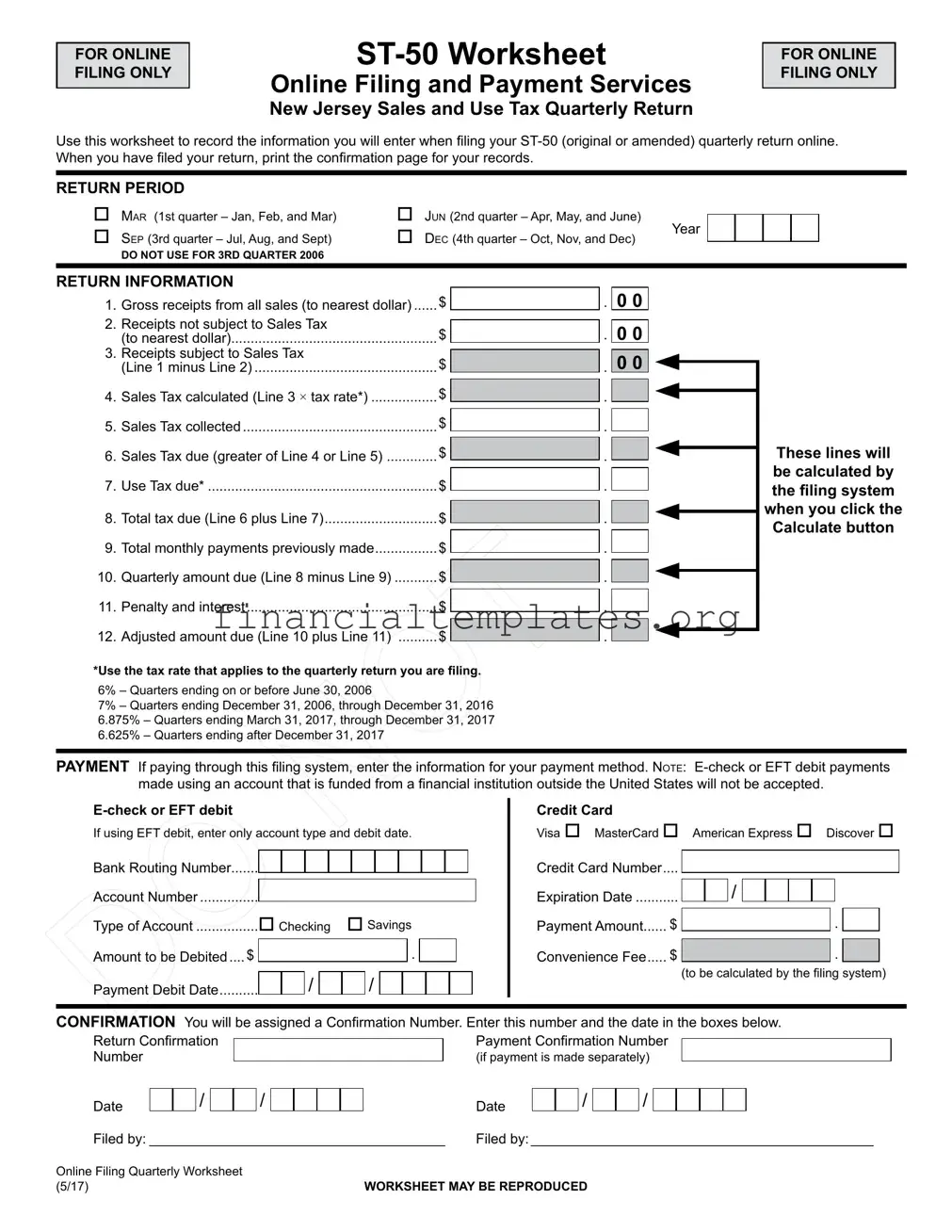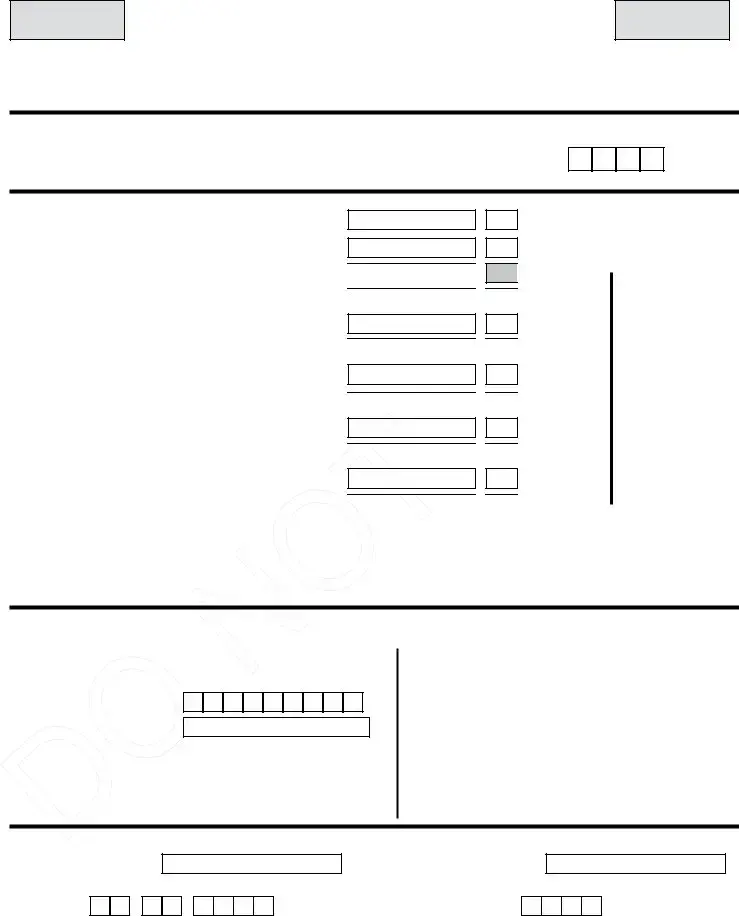In the realm of business operations within New Jersey, accurately managing and submitting sales and use tax is a critical aspect that ensures compliance with state regulations. The New Jersey Sales Tax ST-50 form plays a pivotal role in this process, serving as a worksheet for businesses to prepare their quarterly sales and use tax returns before filing them online. This exclusive online worksheet guides businesses through several crucial steps, starting from documenting gross receipts from all sales, distinguishing between taxable and non-taxable receipts, and calculating the sales tax owed based on applicable tax rates that have seen changes over the years. Additionally, the form allows for the recording of sales tax collected, use tax due, and total tax due, while also accounting for previous payments made within the quarter. The completion of this process culminates in the determination of the quarterly amount due, along with any penalties and interest applied, leading to the adjusted amount owed to the state. Payment methods are conveniently integrated into the system, supporting various options including e-check and EFT debit, with notable restrictions on accounts funded outside the United States. Moreover, the provision to print a confirmation page upon filing offers businesses a record of compliance. This meticulous approach to tax filing underscored by the ST-50 form highlights the importance of accuracy and timeliness in adhering to New Jersey’s tax laws, ultimately contributing to the seamless operation of businesses within the state.






 .
. 


 .
. 


 .
. 


 .
. 

 .
. 
